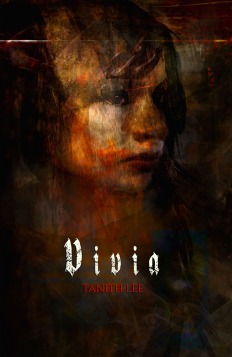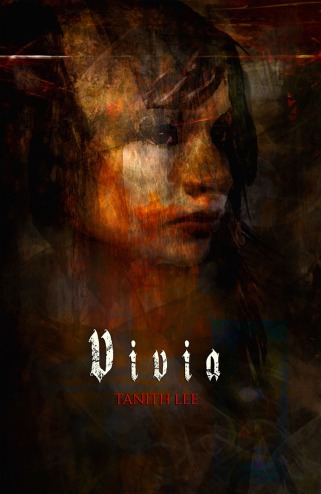I finished my new Wraeththu novel, ‘Breathe, My Shadow’, just in time for its December release. It’s fortunate that our printers have such a fast turnaround (one to two days to generate electronic proofs after files are uploaded), because I did cut it really fine. But now it’s been uploaded, prepared and approved, and printed copies are on their way to me, so the book will be ready to go on the release date of 12th December, when we’ll be holding our annual Immanion Press Yule party. The beautiful cover is by Ruby and features Meladriel, one of the main characters.

This book took me far longer to write than I’d anticipated. Part of this was down to the fact that Danielle Lainton and I have had to take on full responsibility for Megalithica Books, following its manager’s departure from Immanion Press early this year. I’ve had to do a lot more editing, even though Louise Coquio has come onboard as the senior editor for the non-fiction list. Danni and I completely revamped the Immanion Press web site this year, and also my personal web site, which took a lot of work and effort and time. On top of these extra duties, ‘Breathe, My Shadow’ insisted on complicating itself. Initially, it was to have been an extended version of ‘The Emptiness Next Door’, the story I wrote for the ‘Para Spectral’ anthology, but I didn’t think I’d extend it that much. I anticipated that it would be at most a longish novella. However, once I started writing, adding a couple of extra characters, the book took the bit between its teeth and galloped off with no intention of listening to my attempts to order it to slow down, or even stop! In theme, it’s closest to ‘The Moonshawl’, in that the characters investigate an historical mystery that manifests through paranormal events. But other than that, it’s a very different story. It’s set in Ferelithia – and those who are familiar with the Wraeththu Mythos will know that’s where Pellaz met Caeru before he was Tigron. To those who are unfamiliar with the lore, it’s a Wraeththu party town – rather like Ibiza used to be. But while it’s a prosperous, hedonistic place, filled with tourists, few are aware of its dark history. Until the past begins to seep from the soil.
Louise was the main editor for the book, (Wendy Darling did a read through and offered feedback also), and read all the drafts – even a few chapters I’d send her now and again for feedback. Midway through the book she felt something was missing, and it was at her suggestion I added the character Ulien – a young har targeted by a malevolent har, or entity or ghost – whatever he is! I also gave the town itself a viewpoint – just a short page here and there. I didn’t intend for the story to stretch as much as it did. Other characters demanded to have more of a role – including Caeru himself (which is, I hope, rather a fan pleaser – Caeru having an adventure of his own rather being merely a supporting character of the Aralis dynasty). November arrived and I felt the book wasn’t anywhere near finished. To be honest, I started to panic, calmed only by Lou’s assurance all would be well, that the remaining work wasn’t as much as it seemed, and I’d have plenty of time to see to it. Then suddenly, it was done, all the dangling ends tied neatly. I was exhausted but happy – and most importantly, pleased with the result. So while ‘Breathe, My Shadow’ often felt horribly like a vampiric child, sucking all the life juice from me, it clearly thrived on the sustenance!
This book isn’t as grim as some of the Wraeththu Mythos I’ve written over the past couple of years. ‘Blood, the Phoenix and a Rose’ was gruesome in places and while the endings to the three novellas that comprised it weren’t relentlessly downbeat, they weren’t exactly cheery either. Similarly, some of the stories I’ve contributed to for various Mythos anthologies have been somewhat bleak – and wistful in tone. ‘Breathe, My Shadow’, while including its own grisly moments, has more of an upbeat denouement. I suppose the spirit of Ferelithia refused to be kept down for long. I didn’t want to find myself stuck in what seems to be the current trend of fantasy being numbingly miserable and brutal. Inspired by Justin Benson and Aaron Moorhead, who wrote and directed ‘The Endless’, (now one of my favourite movies), who said in one interview I watched that they prefer happy endings, I decided this book would finish well for every character involved… well, nearly every character. I also took inspiration from Cameron Crowe (fans of his will see why and how if they read this book), and the novelist Diane Setterfield, who always makes sure her readers know how every character ends up – even the future of the cat in ‘The Thirteenth Tale’! I really like that approach – it’s comfortably satisfying – and I hope other readers feel the same. (Her new novel ‘Once Upon a River’ is superb, by the way. Recommended.) While I doubt I’ll do this for every novel I write, I have for this one!
‘Breathe, My Shadow’ will be launched at the Yule Party, at The Shrewsbury Arms in Stafford on 12th December. We’re also launching two other titles that day. First is another fiction work, a novella by Tanith Lee entitled ‘The Heart of the Moon’. This has been published only once before and it’s likely not many Tanith fans will have read it. The story is set in an alternate Ancient Greece and concerns a female warrior being sent to the mysterious Isle of the Moon to attend a religious festival. Intriguing and beautifully written – as all Tanith’s works are – the book also includes another Classics-inspired short story, ‘The Dry Season’, set in an alternate ancient Rome. Again, this piece has had low key prior publication – so hopefully the stories in this book will be like new works for many of Tanith’s fans. It has a cover and interior illustrations by Danielle Lainton – very sumptuous!

The third book we’re launching is a non-fiction title called ‘Psychic Protection’ by Bill Duvendack. A lot has been written on this subject before, but Bill brings a fresh new take to it. He begins by suggesting that if you think you’re under psychic attack, you’re probably not, and then explains what natural situations, conditions and illnesses might make you think you need to defend yourself psychically. Once all the obvious explanations are dealt with, he goes on to discuss the phenomenon of vampires in our society – not the blood-sucking kind of myth and fiction but emotional and psychic vampires who can leave people feeling drained, even ill. Bill gives advice on how to boost your defences against such types and to strengthen your inner resources generally. This is very helpful even for those who might be sceptical about the idea of needing psychic defence. Such attacks aren’t always the obvious, almost fictional idea, of someone sending out ‘evil’ thoughts deliberately, or – as in books and movies – causing supernatural events. An interesting read. (Cover by Danielle Lainton.)

As for next year, we have a lot of titles planned, which I’ll talk about in more depth after the New Year. I’m editing an anthology of weird landscape stories for NewCon Press, called ‘Shadow on the Hillside’. This will be released some time in 2020, and includes stories by such writers as Liz Williams, Freda Warrington, Sarah Singleton, Kari Sperring and Andrew Hook. I’ll be working on non-fiction projects for Immanion Press but hope to at least begin a new novel. I still have the next Ysobi story planned, which would take him to solve a mystery in Siberia! I started writing it a couple of years ago, but other projects intervened or took precedence. I just have to follow where my muse wants to go – and she can be capricious.
So that’s all for now. I wish you all a wondrous Yuletide and New Year!































